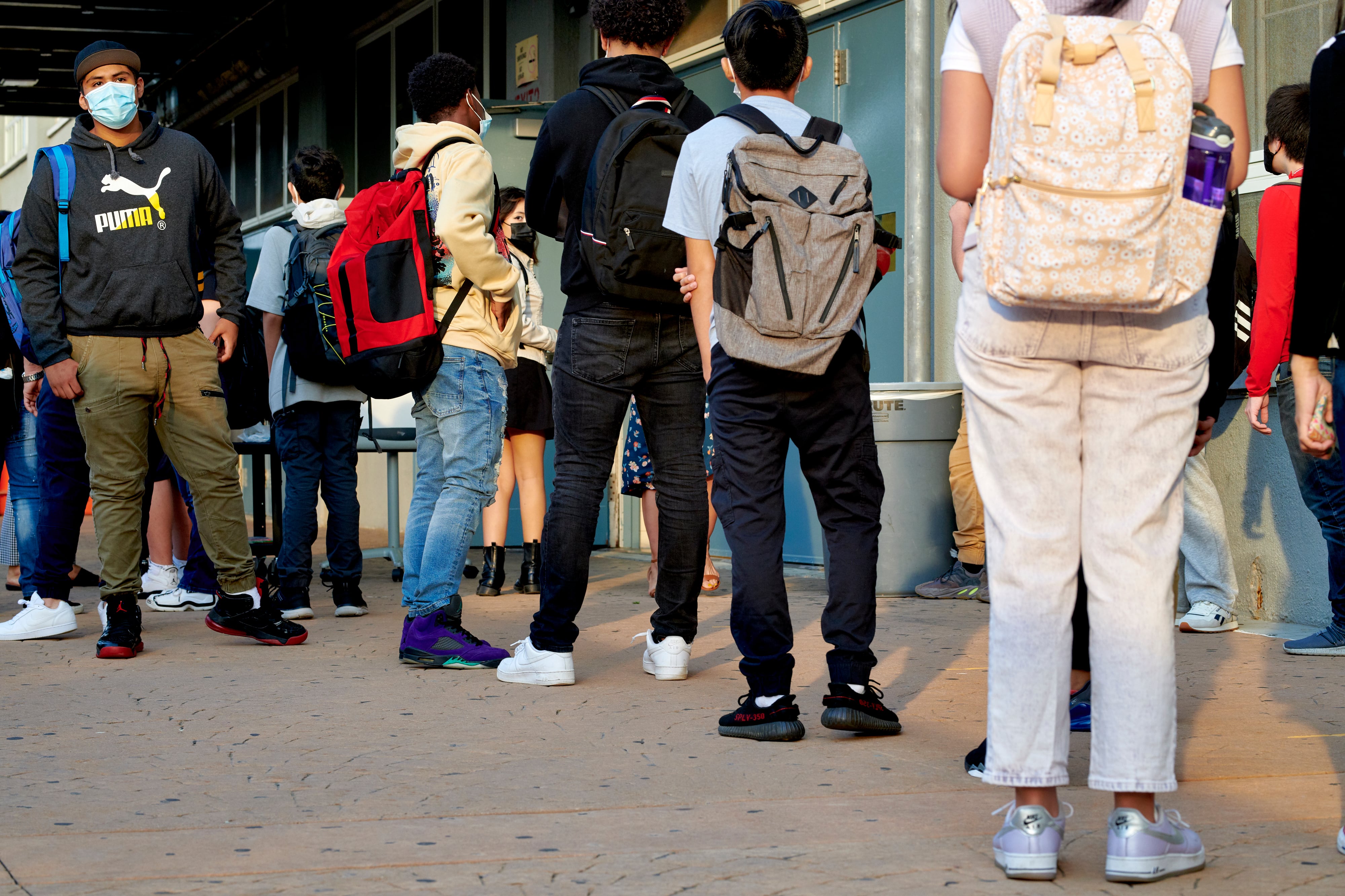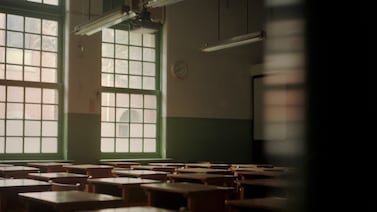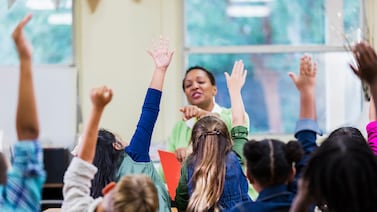After surviving two school years “completely veiled in the pandemic,” teacher Kathryn Vaughn says this year is off to a different start.
Her stress levels are down. COVID protocols are relaxed. Teachers are feeling hopeful.
“It feels a little lighter this year,” said Vaughn, who teaches elementary school art in Tennessee. “It really feels like we’re just kind of back to business as usual.”
Many students and educators are returning to classrooms this fall with a sense of cautious optimism. But there are still many open questions after last year’s staffing shortages, student absences, and mental health and behavioral challenges interfered with academic recovery efforts.
Here are seven big issues facing schools:
How will schools handle staffing challenges?
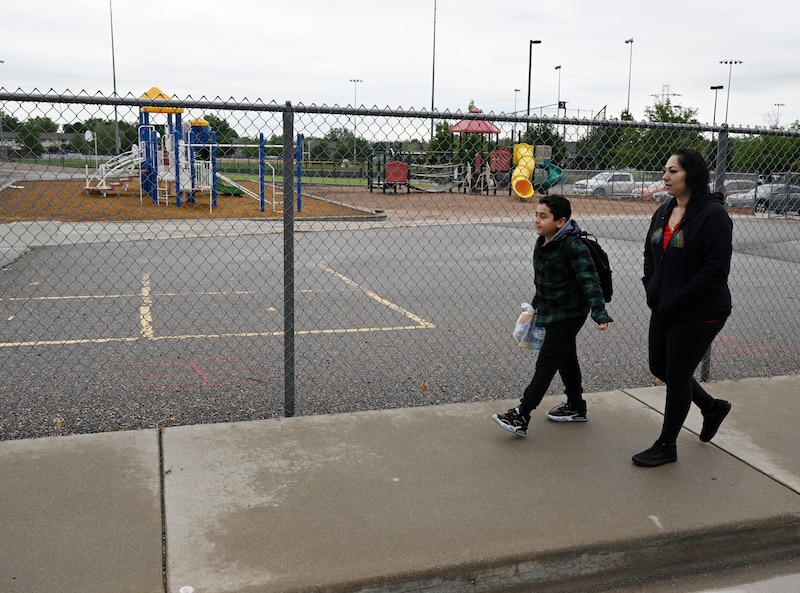
First, some reassuring news: Despite what you might have heard, there isn’t evidence of an unprecedented teacher shortage nor an exodus of teachers fleeing the profession.
Yet some schools are struggling to staff up — partly for reasons that predate the pandemic. High-poverty schools have long had trouble recruiting and retaining teachers, and the supply of new educators has dwindled over the past decade as fewer people enroll in teacher-prep programs.
But the pandemic also has created new complications. Many districts used federal relief funds to add more positions, including tutors and extra substitutes, creating huge demand for a limited pool of workers. Schools also must compete with other employers for lower-wage workers, such as bus drivers and custodians, spurring some districts to hike their pay and offer bonuses.
Those hiring pressures are bearing down on Paterson Public Schools, a high-needs district in New Jersey. Some 130 teaching positions remain unfilled, or nearly 6% of the total teaching force, about three weeks before students return, said Luis Rojas, Jr., the district official who oversees human resources. While some vacancies are expected, Rojas said the number has surged as teachers take advantage of the tight labor market.
“They understand the demand,” he said, “and folks are jumping around from school district to school district trying to move up the salary ladder and get as much money as they can.”
The causes of the staffing crunch are ultimately less important than the effect on students. Schools that can’t find enough teachers might have to raise class sizes, hire less qualified candidates, assign teachers to subjects in which they have limited training, or rely on long-term substitutes — all of which can get in the way of learning.
“I would tell you that one is too many,” Rojas said, “when you have a vacancy.”
Will student attendance improve?
Chronic absenteeism rates rose last year, as quarantines and COVID infections kept students home for long stretches.
This year, the CDC is no longer recommending that students quarantine after an exposure. Many think that will help stabilize attendance, though it’s possible other factors could persist, such as lingering student disengagement.
In Los Angeles, about half of all students were chronically absent last year. Even without quarantines, 30% of students were chronically absent, up from 19% before the pandemic.
“That is just not acceptable,” Superintendent Alberto Carvalho said last week as he announced a new campaign to boost attendance by visiting student homes.
In Detroit, 77% of students were chronically absent last year, up from 62% the year before the pandemic began. There, the spike was especially concerning because the district has long worked to raise attendance. Now, officials are stepping up efforts to get kids to school.
Lisa Blackwell, a district attendance agent, is part of that. This summer, she’s been knocking on doors to talk up her elementary school’s new before- and after-school care options, and explaining to parents the COVID precautions her school is taking. She’s also planning incentives to reward students, like bringing an ice cream truck to school.
“I want to focus more so on getting the kids excited to go to school,” Blackwell said. “Maybe that will push parents a little bit more to say: ‘Well, my kid is very excited to be at school, so I as a parent, I’m held accountable to make sure they get there.’”
Can schools meet students’ mental health needs?
Inside classrooms across the country last year, the crisis in young people’s mental health was all too evident. After many months of social isolation and learning by laptop, some students were prone to outbursts, meltdowns, and squabbles.
“These kids are very anxious,” said Aaron Grossman, a fifth grade teacher in Reno, Nevada. “The uptick in behavior is very real.”
The distinct but overlapping challenges of worsening student behavior and mental health were fueled by the pandemic — and the stress, financial hardships, and trauma it caused. Federal survey data from this spring confirmed the twin crises: 70% of public school leaders reported an increase in students seeking mental health services during the pandemic, and 56% said disruptive student misconduct had become more common.
Efforts to address both issues have achieved mixed results. Some schools responded to student misbehavior by leaning into restorative practices, which aim for healing over punishment, but others issued more suspensions than usual. Many schools used federal aid to hire more counselors, social workers, and school psychologists, but not always as many were needed. In an April survey, just over half of school leaders said their schools could provide mental health services to all students who require them.
Nance Roy, the chief clinical officer of The Jed Foundation, which focuses on youth mental health and suicide prevention, says schools should encourage students to reach out for help and connect them with service providers.
“It’s developing a culture of care and compassion in schools,” she said, “where there’s no wrong door to walk through for support.”
What will public school enrollment look like?
U.S. public school enrollment held steady last fall, according to federal data released this week. That came after student head counts dropped 2.8% in the fall of 2020, following years of national enrollment growth.
Last year saw a spike in preschool and kindergarten enrollment, both of which dropped sharply when many districts turned to virtual schooling. The return of full-time in-person learning, declining COVID safety concerns, and additional family outreach likely helped boost those grades. But enrollment continues to fall among students in other elementary and middle school grades, a trend that could spell trouble for some districts as the extra funding from federal COVID relief packages dries up.
The issue weighs especially heavily on school leaders in big cities where the share of small schools has ballooned. Now, some are considering school closures, which can create schools that are less expensive to run and have a wider range of programs, but will mean more disruption for students who’ve faced a lot of it in recent years.
“There are really awful tradeoffs,” Shanthi Gonzales, a former school board member in Oakland, California, told Chalkbeat this summer.
Can schools get extra academic help to students who need it most?
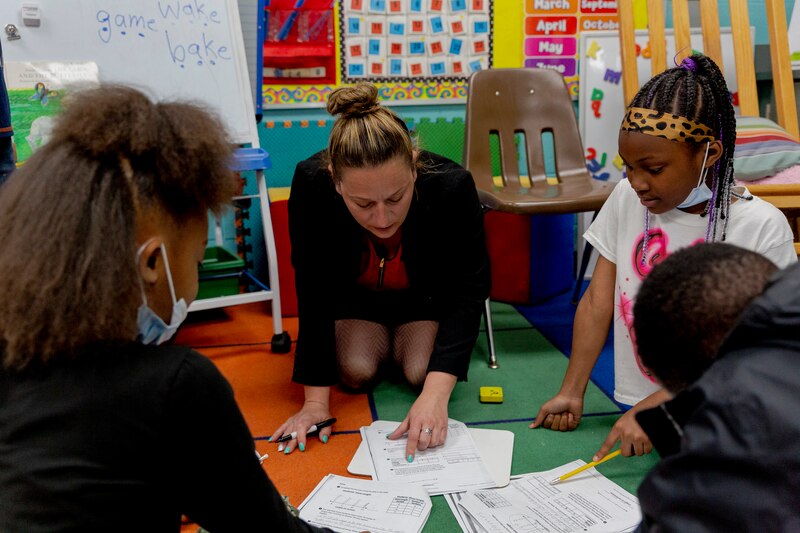
The road to academic recovery is coming into focus as data rolls in. So far, elementary school students seem to be recovering more quickly than middle schoolers, but students of all ages are still significantly behind where they would normally be on reading and math tests.
Katrina Abe, a math teacher in Houston, has seen that. Last year, her eighth graders needed extra help with seventh grade topics like interpreting graphs and understanding rates of change. Those concepts are harder to grasp virtually and without working in groups, which happened if students learned online or missed a lot of class the prior year.
This year’s class is noticeably behind last year’s, she said, likely because half of them had three different math teachers in seventh grade. To help, Abe is planning small-group instruction every day and more turn-and-talk time so students can problem solve together. She’s also going to review some fifth and sixth grade standards.
“We’re going to just take that slow, depending on their level,” she said.
Many schools are offering tutoring and other kinds of academic support, but data on which recovery efforts are working is limited. More than half of public schools said they provided high-dosage tutoring in a recent federal survey — a highly effective strategy — but schools often have trouble staffing and scheduling that support. Some districts have turned to virtual tutoring, but it often doesn’t reach students who need help the most.
Meanwhile, educators are keeping their eyes on the larger crop of teens who are behind in credits needed to graduate.
Will schools ramp up COVID relief spending?
Schools have an unprecedented pot of federal money to spend, but many are still struggling to put it to use. There’s a few reasons for that. In some states, money got stuck in red tape and arrived late. Elsewhere, schools are having a hard time finding staff to fill new positions, or hiring contractors to make building repairs.
Some districts that have been slow to spend say they’re planning to ramp up spending over time. Indianapolis Public Schools, for example, had spent only 10% of its federal COVID aid as of late June, mostly to avoid staff cuts and buy PPE. But the district says it has budgeted all the money, including to tutor more students.
Still, this aid doesn’t always feel like new money. New York City recently gave schools the OK to use $100 million in federal aid that was previously set aside for academic recovery to pay teachers, after announcing $215 million in school budget cuts.
This money also has been difficult to track: School district spending plans vary widely in quality and there’s often limited data at the state and federal levels.
But some trends are apparent. When FutureEd, a Georgetown University think tank, looked at spending plans for some 5,000 school districts in June, it found a quarter of federal funds were budgeted for staff, and another quarter were earmarked for academic recovery. Just under a quarter was set aside for facilities and operations, mostly to upgrade heating, ventilation and cooling systems.
How will the culture wars shape what students learn?
America’s latest culture wars are being waged inside schools.
Seventeen states now ban lessons on racism or sexism, six states restrict teaching about sexuality and gender identity, and 18 states don’t allow transgender students to play on sports teams that match their gender.
Peyton, a 12th grader who is part of a support group for Black queer youth in Alabama, said the laws send a clear message to LGBTQ students.
“It’s just enforcing that you’re not normal and society does not want you here,” they said.
In addition to making some students feel less safe, the laws are limiting what they learn.
Some teachers have curtailed class discussions about the oppression of Black people and Native Americans, and some schools are restricting students’ access to books by or about people of color and LGBTQ Americans.
The Biden administration has proposed new rules to protect LGBTQ students, but conservative states are expected to challenge those rules in court. Meanwhile, school districts that run afoul of the new state laws already are facing consequences, and more attacks are likely: Florida’s new law allows parents to file complaints or even sue if they believe their children are taught banned topics.
But for every lesson that is challenged, many more will never be taught as schools seek to avoid sanctions and controversy. In a new survey, 1 in 4 teachers nationally — and nearly 1 in 3 teachers in states with curriculum restrictions — said higher-ups told them to steer clear of contentious topics in the classroom.
As Andrew Kirk, a high school teacher in Texas, told Chalkbeat: “This chilling effect is already happening.”
Jessica Blake contributed reporting.
Kalyn Belsha is a national education reporter based in Chicago. Contact her at kbelsha@chalkbeat.org.
Patrick Wall is a senior reporter covering national education issues. Contact him at pwall@chalkbeat.org.

